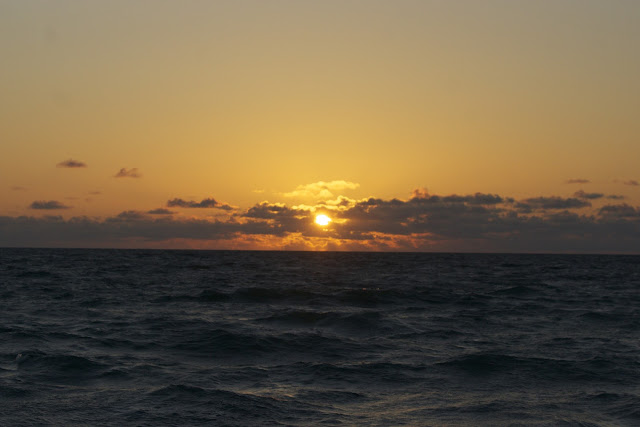Florida is a super birdy place, like unfairly birdy. It's the only state with records of all the North American herons and egrets, it gets plenty of the east coast warbler migrations, it has its own endemics, plenty of cool raptors, vireos, solid sparrows, terrific terns, and Masked Duck.
Located on the southern half of the gulf coast, the Naples area isn't the birdiest in Florida, but it still has some hot spots, and one of the most well known is the Corkscrew Swamp Audubon Sanctuary.
This lovely preserve hosts several different habitats, including cedar forests--a diminishing habitat--that host breeding pairs of Wood Stork earlier in the winter. The cedar woods grow adjacent to pine woods, something that, as an Arizonan, it's weird to see when not above 5,000 feet elevation, and of course there's plenty of marshy mush all around.
The pristine foliage at this preserve was remarkable, but that didn't make it easy birding. When I arrived around 7am, the woods were echoing with calls, but many of them were unsurprisingly foreign. High canopies, adverse lighting, and continual cloud cover exacerbated the difficulties of looking for little birds in big woods, though I must admit that birding in the shade was a nice change.
The most dominant sound of all, by far, was that of the Carolina Wren. With so many of the other birds staying high in the canopies, they were also, somewhat oddly, the most visible birds and were consequently the most numerous species I counted during my time at Corkscrew. Photographing the flighty buggers was tricky in the shade, but their numbers meant the odds were in my favor and eventually one perched in a sunnier spots, and did so very nicely.
That particular Carolina Wren just happened to fly in and land only a few feet away from me. It was a welcome relief to my eyes, which were otherwise being tasked to discern the small birds in this mess. I know I must be sounding pretty meek here, but birding in the thick forest really is a different skill, and one with which I have precious little practice.
Audio birding was terrific for getting ticks, but coming to a new place is only satisfying with some solid sightings too. In the hopes of seeing Barred Owl, I was constantly scanning the mossy overhangs above me, never turning up the Owls but seeing several of the handsome and Arizona-uncommon Red-shouldered Hawks. The tales that people bring back from birding in Costa Rica or Peru are marvelous, and maybe the absurdly high amounts of absurdly colorful birds there breaks through the jungle, but honestly my confidence in birding those sorts of places is shot after struggling in the Corkscrew cedar.
The twisting boardwalk teemed with other life, as many insects (non-biting for the most part), reptiles, and amphibians all made their presence known. Scurrying anole lizards and clinging tree frogs were lovely decoration during the trip, and some larger aquatic lizards attentively loomed in the duckweed off the boardwalk. How many wee gators do you see?
While taking a break in the gatorhood, I was able to snap off the only Warbler shot I came away with during the trip (crushing disappointment!). Of course, it had to be a Warbler I've seen and photographed in Arizona already. There isn't any avoiding it; I'll just have to go to Ohio some May and do the warblering right.
One section of the Corkscrew boardwalk leads out of the dense cedar marsh and into the thinner Florida pines. Of course, this different habitat supported different birds, and here I was able to pick up some lifers with relative ease. A calling Great-crested Flycatcher was a great start.
Chittering Pine Warblers and Brown-headed Nuthatches were great continuations, particularly because the brown-helmet pygmy completed my North American Nuthatch section.
The Red-shouldered Hawks were second only to Osprey as the most common raptor in the Naples area, and at Corkscrew Swamp they were the most numerous. Seeing some fly-over Swallow-tailed Kites was a one-off treat, but being up close to the Red-shouldereds was really enjoying the home-feild advantage that birding in Florida brings.
--Home Field Advantage: noun; seeing a bird in it's preferred/best/most usual habitat, such that one gets more and better views (and photos) than one gets seeing the same species of bird as a vagrant in other areas. Example: "Traveling to Florida gives the Arizonan a great Home Field Advantage for Red-shouldered Hawks and Northern Parula, which turn up in Arizona but are often skittish and a total pain to pursue.
A full day's agenda necessitated a relatively short visit to Corkscrew, but on the way out there were plenty of birds to see and shoot in the parking lots spaces, where the thick palm and elm groves gave way to green lawns. Here the Black Vultures did Vulture things.
And Common Grackles did Grackle things. I know, it's in bad taste to include a Common Grackle in a bird post, but it was a lifer for me okay so, like, leave it alone!

A young Loggerhead Shrike was the last bit of icing on the swamp cake.
Coincidentally enough, there were a few Woodstorks feeding in one of the many road-side drainage canals while driving to Corkscrew Swamp, but it was too late in the year to expect any in their roosts. Despite the sore neck and lack of Storks, it was a solid tally for Corkscrew Swamp (unsurprisingly) and a great lesson in practice and adaptation for an outsider like myself.
































































